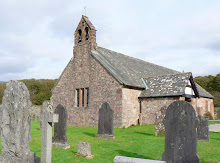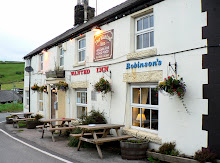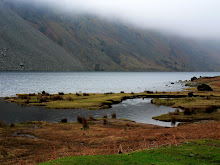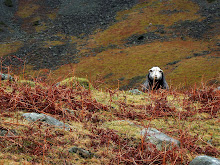London is a remarkable city with a rich and limitless heritage upon which to draw. It is no surprise therefore that London has numerous attractions and famous landmarks, from all eras of its history. No matter where you are located within London, there seems a never ending list of things to do and places to see.
The majority of people who visit London do so because of the huge variety and choice of shops, theatres, museums, art galleries, palaces, parks, nightlife, eating establishments and entertainment. Plenty of scope then for the day trip that we were planning! But having lived in London and pretty much exhausted the tourist trail, we promptly ignored all the obvious attractions and headed instead for a day of waterside vistas.
One of the Capital's best kept secrets is the beautiful green corridor of The Regent's Canal, stretching eight and a half miles long and flowing from Little Venice through Camden and past Islington, Hackney and Tower Hamlets before it finally enters the Thames at Limehouse Basin in the East End. But unlike the canals that wind their way around fields and between towns, the Regent's Canal is tucked away behind Kilburn High Street, Maida Vale, London Zoo, Primrose Hill, and behind the gardens of the avant-garde and some of London's most exclusive and desirable addresses. In just 3 short miles our 'alternative London' walk along the tow path of Regent's Canal offered us views and images that we would not otherwise have seen, nor even known existed.
The Regent's Canal was built in the early 19th Century to link the River Thames at Limehouse to the Grand Union Canal junction at Paddington. One of the directors of the canal company was architect John Nash, famously commissioned by the Prince Regent (later George IV) to design Regent's park and the surrounding curved terraces. Nash's association with the Prince facilitated the Royal approval needed in naming the canal in his honour.
It was finally completed and opened in 1820 at a total cost of £772,000, twice the original budget. After major engineering difficulties and accusations of financial embezzlement, the Canal successfully carried 120,000 tons of cargo through London in its first year. Together with the Grand Junction Canal and the associated routes to the Midlands and north, the Regent's Canal formed an essential component in southern England's transport system. Huge quantities of timber, coal, building materials and foodstuffs were carried and long-distance traffic continued to use it into the 1960s. It was deemed a success back in 1820 and continues to be one today, offering a hidden tow-path of tranquility in an otherwise fast-track world.
The leafy theme continued downstream and also onto the narrowboats! The pretty residential moorings of Blomfield Road are one of the most prestigious canal mooring sites in London. And here we saw flowers hung from hulls, roofs, boughs and sterns, planted in a variety of beautifully hand-painted receptacles of all shapes and sizes - troughs, kettles, pans, teapots, buckets and wheelbarrows. Such is the pride of their owners, even their boat moorings were decked out with potted palm trees and shrubs - mini patio gardens with a rather spectacular water feature!
Half a mile further downstream at the end of Blomfield Road the canal disappears into the Maida Hill Tunnel and underneath the captivating Cafe Laville. We weren't captivated enough to pay their prices for a cup of coffee, so continued on until we rejoined the towpath at Lisson Grove and continued on to Regents Park. Originally Nash intended to have The Regent's Canal running through the middle of the park although he was persuaded that the bad language of the Navvies would offend the refined residents of the area so altered his plans. Nash had plans to build 56 villas in Regent's Park, however only eight were completed. The beautiful white villas on the right were built to Nash's original designs during the late 1980s and early 1990s and drew inspiration from the architecture of ancient Greece and Rome in the Renaissance period.
Continuing along the towpath we passed under two bridges. The first is an aqueduct carrying the forgotten River Tyburn over the canal. The second is the notorious Maclesfield Bridge or "Blow up Bridge". Here, in 1874, a barge carrying gunpowder exploded and destroyed the bridge. Evidence of the explosion can be found on a nearby plane tree which survived the blast. Passing underneath the bridge the famous Snowdon aviary of London Zoo then came into view. Opened in 1965, the aviary was pioneering in engineering terms.
Ahead of us we saw the Feng Shang Chinese floating restaurant moored in Cumberland Basin. This arm of the canal used to stretch towards Euston station but was largely filled in with bomb rubble after the Second World War. At this point the canal took a sharp turn to the left towards Camden. Camden is best known for its alternative and vibrant market scene, which centres on a cobbled courtyard just off the canal. This is where we stopped for a much needed coffee and a chance to sit and drink in the incredible atmosphere and energetic personality that makes Camden so contagious.
Our second waterside wanderings were certainly atmospheric but not at all energetic, as we began it with an aerial 'flight' over the River Thames! The London Eye, at a height of 135 metres (443 ft), is the biggest Ferris Wheel in Europe, and has become the most popular paid tourist attraction in the UK, visited by over three million people a year. More importantly, it gave us the most amazing view of The River Thames, and our Capital.
The wheel carries 32 sealed and air-conditioned egg-shaped passenger capsules, attached to its external circumference, each capsule representing one of the London Boroughs. Each 10 tonne capsule holds 25 people, who are free to walk around inside the capsule, though seating is provided. It rotates at 26 cm (10 in) per second (about 0.9 km/h (0.6 mph) so that one revolution takes about 30 minutes. The wheel does not usually stop to take on passengers: the rotation rate is so slow that they can walk on and off the moving capsules at ground level. This is a significant and important fact, given that I usually have a problem with heights! But the speed of the Eye is so imperceptibly slow that it barely registered on my panic scale! Even when we reached the pivotal point before our descent, there was no real sense of height or fear. Just a feeling of awe at the stunning views across the whole of London.
After our 'flight' over the Thames we decided to 'sail' down it. We boarded our boat at Waterloo Bridge and began the 40 minute sightseeing cruise down river. To the accompaniment of a foreign 'specialist guide' who mostly stated the obvious, we left the shadow of the London Eye towering over the former GLC headquarters of County Hall, and headed downstream towards Westminster Bridge.
The name Westminster was historically used to describe the area around Westminster Abbey, the West Minster, or monastery church that gave the area its name, and which has been the seat of the government of England for almost a thousand years. We saw no signs of governance or political activity as we cruised past (no doubt they were in the House of Commons debating extravagant expense claims, or perhaps just relaxing in one of their well tended homes), so we turned our attention to the stunning Victorian gothic architecture instead.
Under Westminster and Charing Cross Bridges to our right, and in direct contrast to Westminster Palace, stands the unmistakable South Bank Centre, home to the Royal Festival Hall built in the contemporary Modernist style of architecture in the 1950s; the Haywards Gallery and controversial 1960's Brutalist architecture, and beyond it the National Theatre, built in the 1970s and notoriously described by the Prince of Wales as 'a clever way of building a nuclear power station in the middle of London without anyone objecting!'
Mirroring the white buildings of the South Bank Centre on the Thames Embankment is the Savoy Hotel, one of London's most prestigious and opulent hotels, built in 1889 and boasting an 'A-list-guest-list' which includes Monet, Whistler, Wilde and The Beatles (to name but a few favourites!). Further downstream towards Blackfriars Bridge on the right is the little gem that is Gabriel's Wharf, a riverside oasis and colourful arty enclave offering fairtrade furnishings, affordable artwork, crafty creations and refreshments.
Once under Blackfriars Bridge we had a spectacular view of 3 very different bridges spanning the river ahead, the famous 'wobbly' pedestrian Millenium Bridge, the 'first' and latest in a succession of London Bridges, and the iconic suspension bridge that takes it's name from the nearby Tower of London, Tower Bridge. But glances to either side of these bridges provided cultural history in boat-loads.
To our right the area known as 'Bankside', home to 'The Clink', notorious and infamous 12th Century prison. Further on the reconstructed early 17th Century Shakespeare's Globe Theatre, built in 1997 on the site of the original Globe. And towering above them all, the solid imposing structure of the former Bankside Power Station, now transformed into impressive and cavernous Tate Modern art gallery. And as we passed under the Millenium bridge, London's most famous dome came into view, framed by the alignment of the bridge and offering a postcard shot of Wren's 17th Century reconstruction and arguably his best showpiece, St Paul's Cathedral.
As we neared the end of our Thames Trip, we soaked in the sights of one of the oldest buildings in London, famous for it's White Tower, turrets, traitors, treason, torture and tourists. Apart from being home to royals over the centuries, it is also home to the Crown Jewels and the Ravens, without who (allegedly) the White Tower, the Monarchy and the whole Kingdom would fall. But, apparently, even the Ravens don't have any special royal dispensation or immunity. During the recent bird flu scare, they were themselves imprisoned in the Tower! Thankfully they didn't succumb to flu, or execution, and are free to peck and be raucous once again. Which also means the Kingdom won't fall, so we'll be able to explore more of London's landscapes in the future!










































































































































































































Amazing. Your next career should be as a travel photographer/writer.
ReplyDeleteH.